Outbrain integration in CPV Lab
This is a guide showing step by step how to use CPV Lab (opens new window) and CPV One (opens new window) trackers to track campaigns using Outbrain traffic source.
Who is Outbrain?
Outbrain (opens new window) is a company that operates a content discovery and native advertising platform. The company's primary service allows publishers to promote their content, such as articles, videos, and slideshows, on various websites within the Outbrain network. This helps publishers increase their content's visibility and reach a broader audience.
Outbrain's content recommendations can often be found in the form of "Recommended For You" or "You May Also Like" widgets at the bottom of articles or on the sidebars of websites. These widgets typically feature eye-catching images and headlines to entice users to click on the recommended content.
If you don't have an Outbrain account yet, then you need to create one. Here you can find the information about how to create an account with Outbrain (opens new window)
Step 1: Add Outbrain as a traffic source in CPV Lab
CPV Lab comes with the Outbrain Traffic Source pre-configured in the Traffic Sources Catalog pages, so in this case all you have to do is import it from the Catalog.
- Access your CPV Lab or CPV One account
- Navigate to the "Sources" tab and locate the option for "Traffic Sources"
- Click on the "Import from Catalog" button
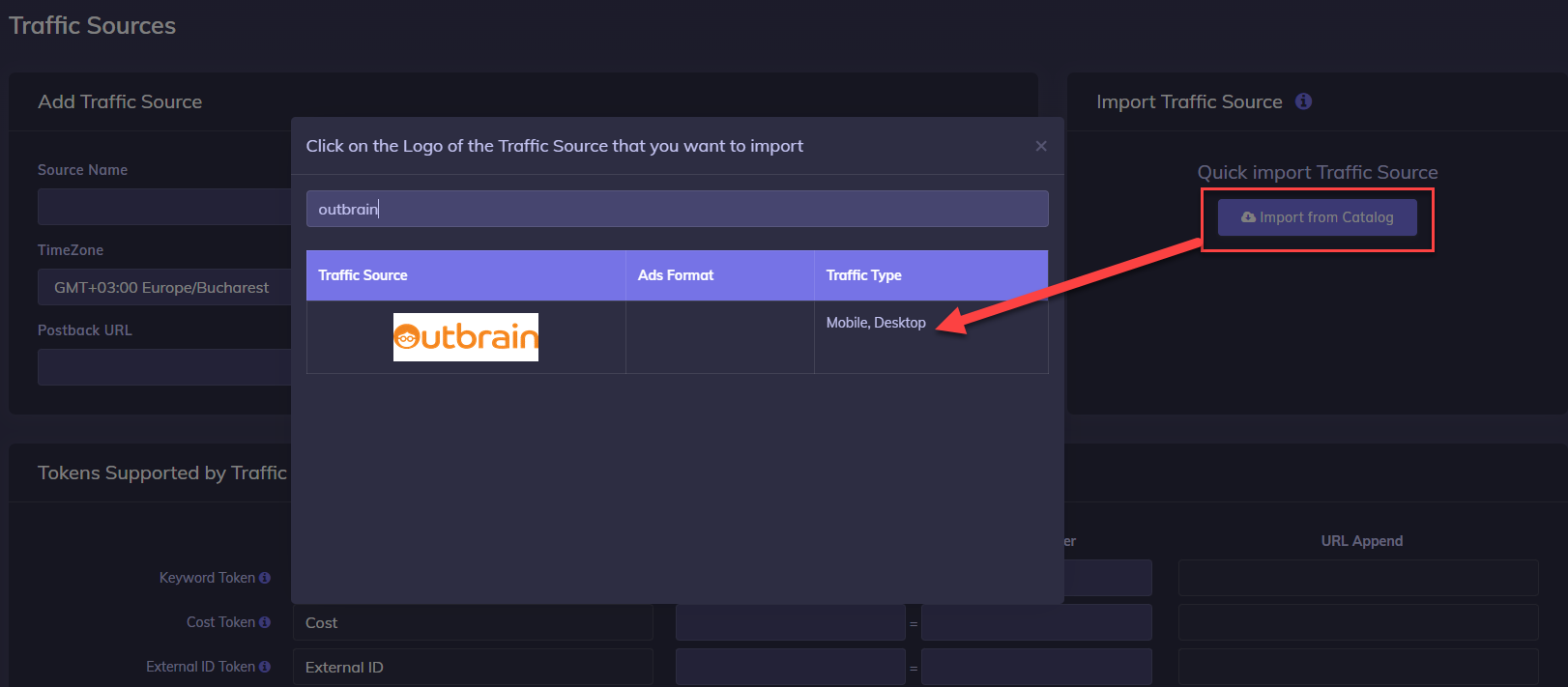
- Select Outbrain
- CPV Lab will pre-populate all the traffic source settings.
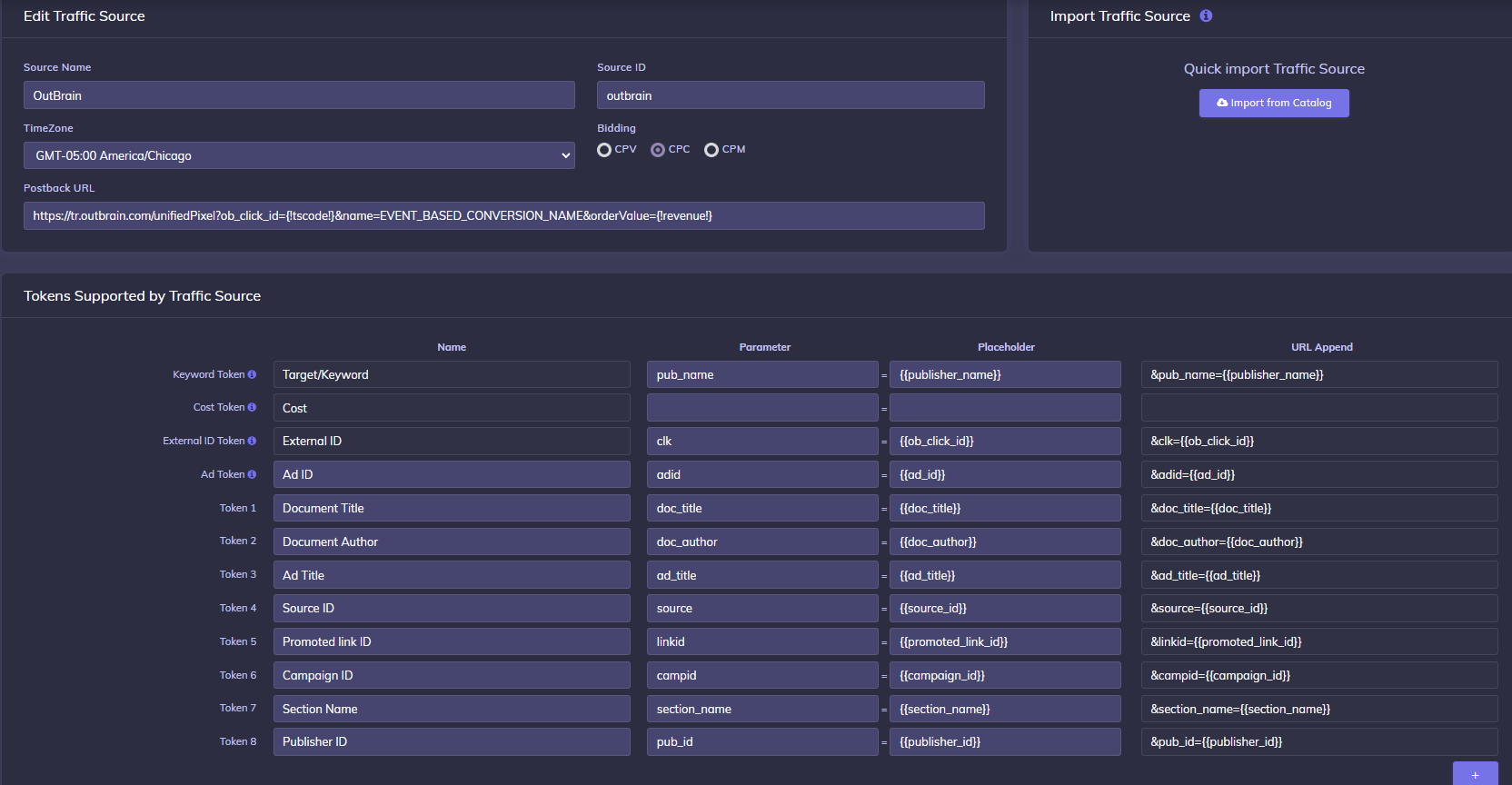
- Click Save
Step 2: Add an Offer Source (optional)
If you are using your own offer and not utilizing an Offer from an Affiliate platform, please proceed to Step 3 below.
To integrate an Affiliate network, navigate to the "Sources" section from the menu and select "Offer Sources".
Go to the "Import from Catalog" where you will discover a selection of Affiliate networks available for integration.
Pick the one you are using for offers and save it once the fields are loaded.
If your specific Affiliate network is not listed, you have the option to manually define it by adding the parameters required by the affiliate platform you are using and save it from the "Offer Source" page.
Step 3: Adding Landing Page & Offer URLs to Campaigns
Before creating a campaign you need to make sure you have your landing pages and offers defined. Once you define your landing pages and offers, you can then use them for your campaigns.
- To add landing pages, go to " LPs&Offers" menu -> Landing page management.
- To add offers, go to " LPs&Offers" menu -? Offer Management
TIP
Note: you can add the landing pages and offers when you create your campaign as well.
Step 4: Set up your campaign in CPV Lab
To start your campaign, click on the top blue button that says: "New Campaign".
You will encounter a menu providing options for creating a campaign based on your preferences.
Alternatively, you can navigate to the Campaigns List and select your desired campaign from there and edit or clone one of them.

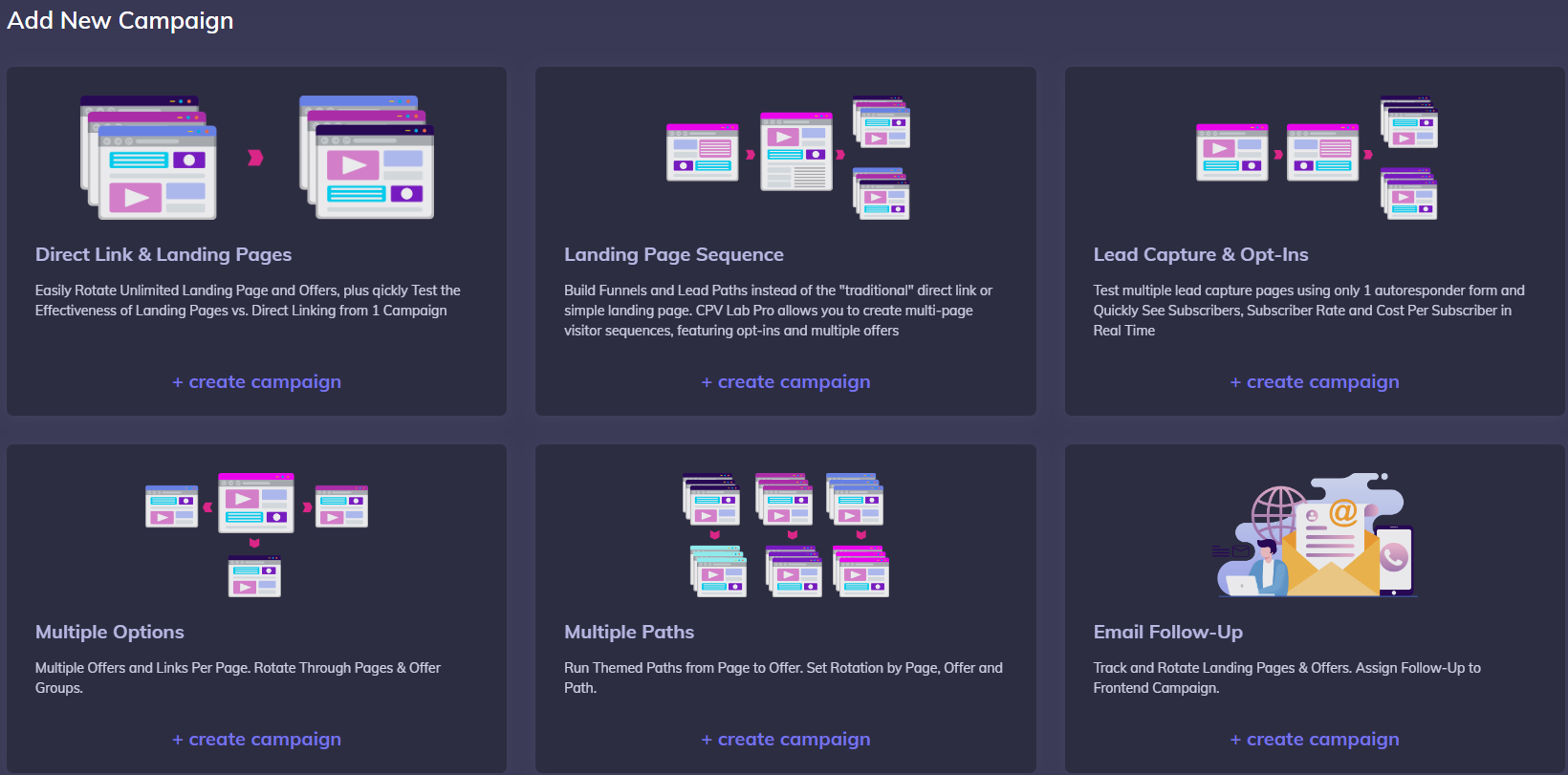
In this tutorial, we will be using a"Direct Link & Landing Page" configuration.
Begin by assigning a "Name" to the campaign, and then proceed to scroll down to the section labeled "Macros & Tokens".
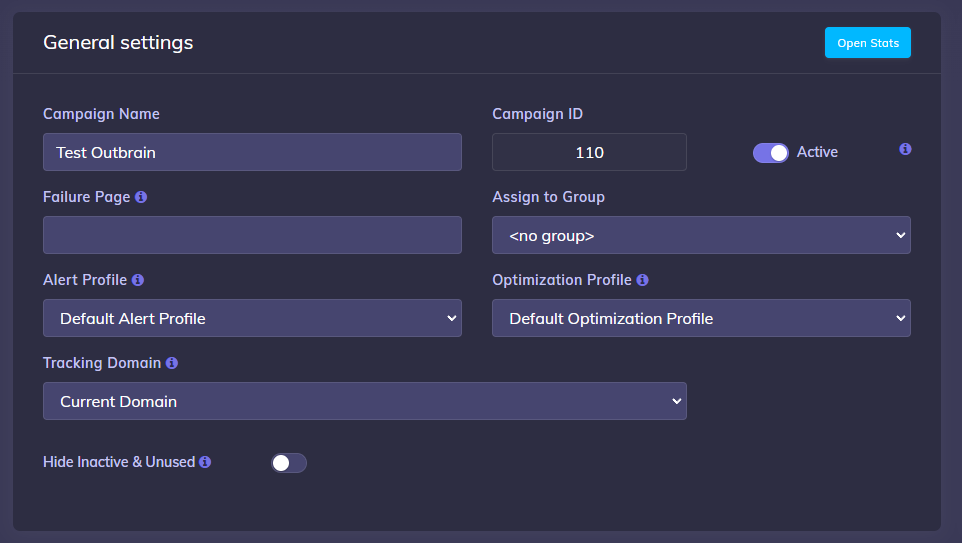
- Choose Outbrain as the designated Traffic Source for this campaign.

- Keep scrolling down the page. If you use a Landing Page, you can input it at this stage in the "Landing Pages" section;
- Under the "Offers" section, click on "Select Predefined Offer" and choose the Offer you previously created in Step 2 above. The remaining parameters will be automatically populated based on the settings defined for the selected Offer.

Step 5: Setup the Postback URL
- In order to track conversions into the Outbrain platform, you need to set up the Postback URL from Outbrain as the Traffic Source Postback URL in the Campaign setup page from CPV Lab or CPV One.
- The tracker will fire the Postback URL and send information about conversions to Outbrain so they can optimize their attribution algorithm.
- The Postback URL should contain the CPV Lab macro
{!tscode!}(for Unique Click ID). - You need to select if you want to use the Postback URL (recommended!) when you create the campaign
- in the campaign setup page go to the "Tracking Pixel: Add Pixel to Offer Source" section.
- Check/select the "Traffic source Postback URL".

- If the Postback URL is not available (it was not set up or was deleted for this Traffic Source) then you can enter the following Postback URL as Traffic Source Postback URL in the Campaign Setup page from CPV Lab:
https://tr.outbrain.com/unifiedPixel?ob_click_id={!tscode!}&name=EVENT_BASED_CONVERSION_NAME&orderValue={!revenue!}
TIP
NOTE: EVENT_BASED_CONVERSION_NAME - Replace with the corresponding Event Name value in Backstage; Revenue is an optional parameter.
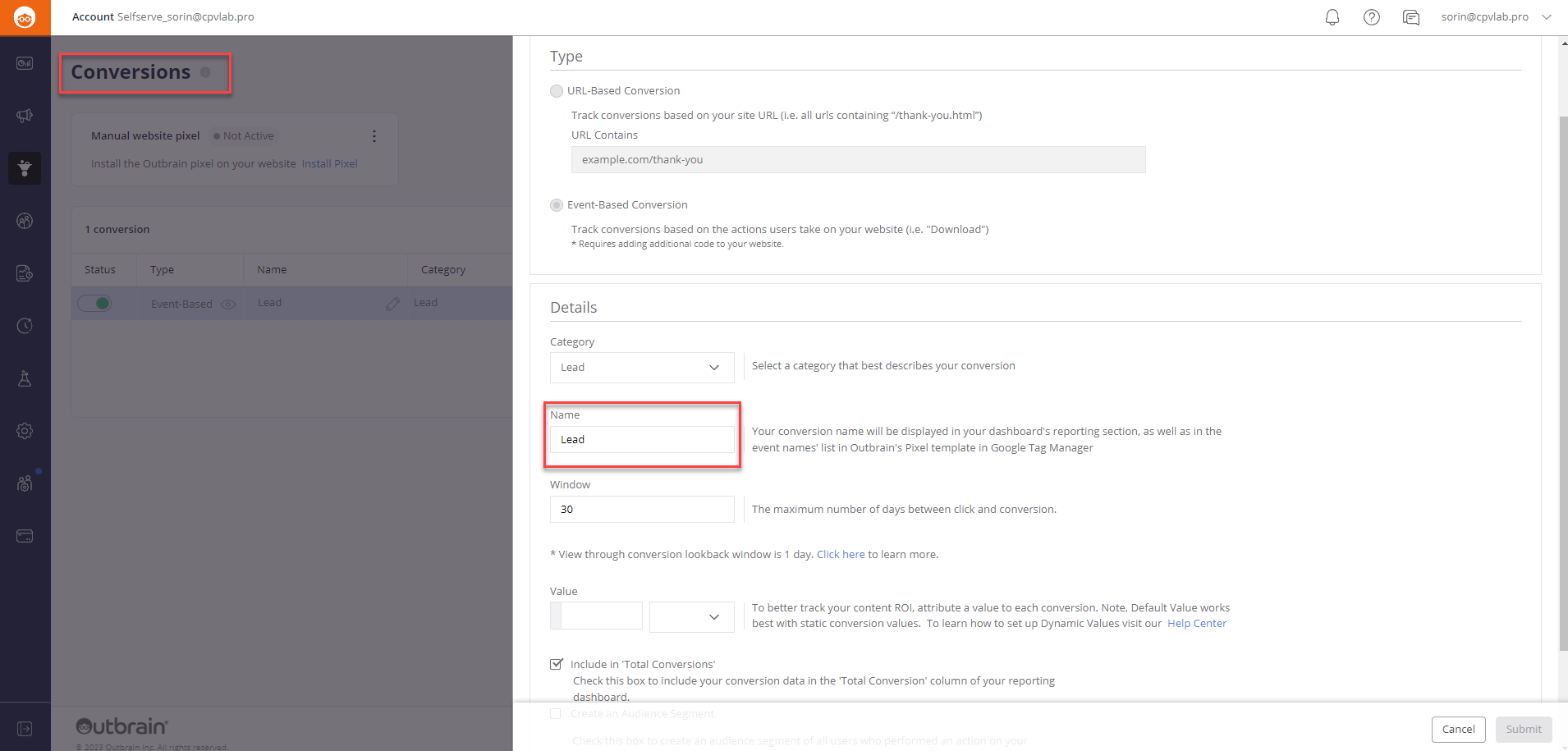
Step 6: Create the campaign in Outbrain
- Login to your Outbrain account
- Create a new campaign by selecting the "Campaigns" menu
- Then click on “Create Campaign”
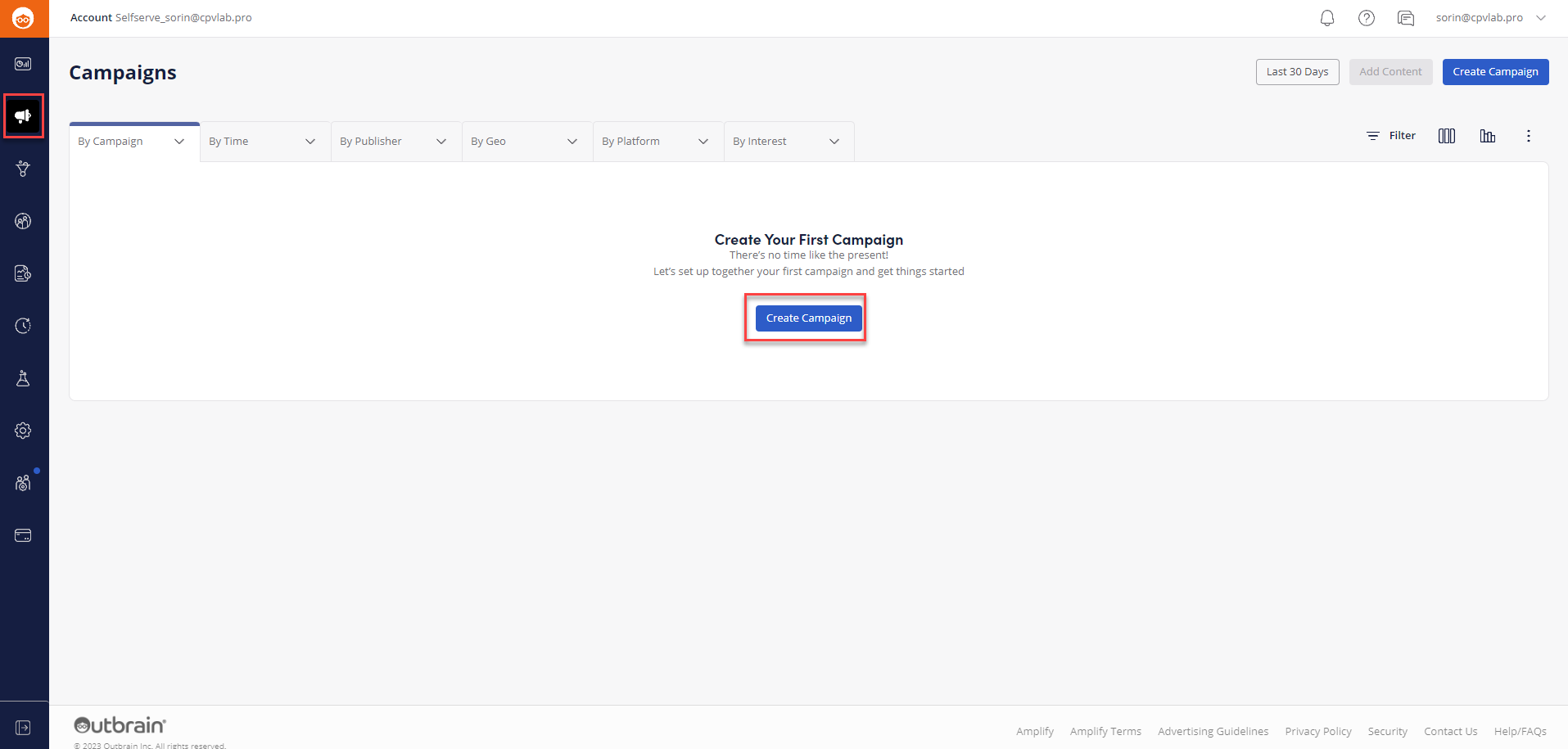
- In the Landing Page URL section, paste the Campaign URL from CPV Lab
- The Campaign URL (provided in the "Links & Pixels" section from your Campaign Setup page) has all the parameters you selected as Macros for your campaign. So, the information will be tracked in the ad tracker.

- Complete all the other fields and save
More information about creating a campaign in Outbrain here (opens new window).
- Once the campaign is launched, you can track it and check all the metrics in CPV Lab / CPV One. If the setup has been done for the Postback URL, you will start seeing conversions both in CPV Lab and Outbrain.
That's it!
